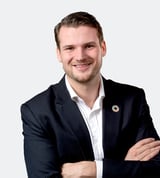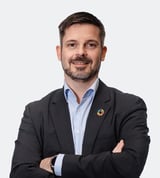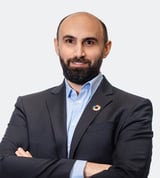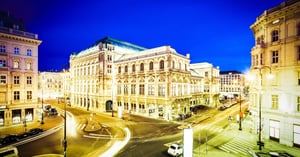This smart city portrait provides an overview of the smart city strategy and intelligent solutions implemented in the Austrian City of Vienna. The city has placed a strong focus on the collaborative nature of growing smarter. In 2014, Austria’s capital decided to adopt a strategy generated with the help of businesses, research institutes, public servants and private citizens to decide on the direction the city should take as it develops.
The preservation of resources, productive innovation and new technologies, and improving the quality of life were the top three things people wanted the strategy to focus on. The areas identified for long-term improvement were then broken down and specific goals were set to help the city “achieve growth while reducing resource consumption”, right through to the year 2050.

"The Smart City Wien framework focuses on strong collaboration and collective intelligence to achieve holistic targets. As a successful smart city, Vienna facilitates the creation of bottom-up solutions instead of focusing on top-down approaches – this really is smart“, states Bart Gorynski, Managing Director of bee smart city.
The strategy, termed the Smart City Wien framework, includes both mid-term and long-term goals to structure its efforts.
As observed by bee smart city, collective intelligence is proving to be the best way to make a city smarter and to ensure that its developments are inclusive and beneficial to all of its citizens. Generating the Smart City Wien framework was itself a highly collaborative project, and will require continuous active participation on behalf of all of its stakeholders in order to succeed.
The "Smart City Wien" Framework Strategy
The holistic nature of Vienna’s collaborative approach is clear in the structure of its framework. Each of its major three themes requires changes to all aspects of life in the city to meet the goals it sets. The theme ‘resources’, for example, calls for the preservation of resources by reducing their use through more efficient practices, headlined by a planned reduction in greenhouse gas emissions of 35% by 2030 and 80% by 2050 compared to 1990 levels.
To achieve these resource targets, more specific goals are split into four related categories:
- Energy – reducing per capita energy use, and switching to renewable energy sources
- Mobility – increasing support of public transportation and non-emitting transportation modes such as cycling or electric vehicles, with a corresponding decrease in private vehicle traffic
- Buildings – new zero-energy building standards and the renovation of older structures to reduce energy consumption from climate control and water heating by 1% per capita per year
- Infrastructure – open government, WiFi across the city, and the development of 100 new apps over the next three years
The last objectives in particular could motivate and enable a strong engagement by the community, and Vienna certainly wants its citizens engaged:
The second theme ‘innovation’ calls for the city to become world-renowned for its education and research activities, leading to a stronger economy.
- Education – strengthening comprehensive and integrated education services and encouraging uptake of voluntary higher education options
- Research, Technology and Innovation – attracting new research units and researchers toward becoming one of the top five innovation locations in Europe
- Economy – increasing tech-rich exports and direct investments to and from the city, with an additional ten thousand people per year setting up enterprises within the city
With its final theme, Vienna hopes to become the city with the highest quality of life in Europe by 2050, ensuring that:
- Social Inclusion – the city’s resources, affordable housing, and involvement in decision-making processes will be made equally available to the full, diverse range of people living within the city
- Healthcare – high levels of more efficient healthcare will be secured for all and broader health literacy encouraged
- Environment – green spaces will be protected in spite of population increases

“Vienna’s three-pronged plan sets specific targets for improving education, fostering innovation, and reducing resource use and greenhouse gas emissions. The city strives to offer the best quality of life of all cities in Europe by 2050“, says Thomas Müller, Co-Founder of bee smart city.
Clearly, Vienna’s collaborative, goal-setting strategy is working. Most recently, the city of Vienna was voted the World’s Smartest City by global consulting company Roland Berger, coming just ahead of Chicago and Singapore out of a list of 87 other cities from around the world. In the reasons for this choice, Roland Berger cites the clear targets of the framework strategy and the city’s active support of pilot projects for its smart solutions.
Vienna’s Smart City Solutions
The Danube, the blue heart of Vienna, is an important logistical highway. Systematically increasing freight traffic along the river would therefore strengthen the city’s economy, and there are a few different projects in place looking to do just that. One of these, ‘Optihubs’, aims to optimize administrative and operational procedures, as well as to perform a market analysis identifying new products which could be targeted for transport along the city’s waterways. Addressing the impact of freight, the project IMPALA is examining the infrastructure at central city train stations and internal harbours to assess the possibilities for increasing efficiency and reducing the carbon footprint of transported goods.
The city has a large number of other projects at different stages, all working toward the framework strategy’s key themes, including many which are already well into the testing phase.
Mobility Initiatives
Smart traffic systems currently being tested at an unnamed Vienna intersection can not only recognize the presence of pedestrians at traffic lights but can also tell whether or not they want to cross, without them having to press any buttons. The system is expected to reduce waiting times and, if the test goes well, it will begin replacing buttons at intersections throughout the city in mid-2018.
Vienna also plans to connect its entire traffic light system, allowing the individual intersections to communicate on traffic flows and to respond where necessary by adapting the lights to alleviate unexpected heavy traffic, avoiding jams and reducing journey times and vehicle emissions in the city. This connected traffic system could also send real-time condition updates to navigation devices, allowing drivers to optimize their routes and offering the potential for ‘green waves’ – three or more consecutive green traffic lights allowing a smooth, continuous flow of traffic in a particular direction.
In Vienna’s public transportation systems, another project in the testing phase sees the energy from rail brakes recovered by converting it into electricity and feeding it back into the grid, using it instead to power facilities such as the elevators and escalators in the subway stations. This lowers the overall energy consumption of the system.
Sustainability Initiatives
In a similar bid to increase energy efficiency, Vienna is looking at the redistribution of its waste heat, treating this type of pollution as a resource instead and assessing how it might be exploited, depending on the nature and location of its source. Waste heat could be fed into district heating systems, reducing the draw on power to run them and increasing the collective efficiency of a neighbourhood.
Through an increased reliance on electric vehicles, LED lighting and renewable energy sources, the Austrian Postal Service has already reduced its CO2 emissions by 30% since 2011. Without resorting to raising its prices, it also compensates its remaining emissions by supporting climate-oriented sustainability projects elsewhere. By reducing the emissions of their delivery vehicles, the Austrian Post has also contributed to improved air quality – and therefore the improved quality of life – within the city.
The removal of polluting traffic from the city is also the objective of the ‘model car-free housing’ project. Vienna already started zoning car-free residential complexes back in 1999, asking tenants to commit to living without a car of their own. The idea got a positive reception, with some tenants citing it as part of the reason they selected the complexes for their new homes. By having more people cycle or use public transport, space and resources that would have been put into garages can be invested in community facilities or improved building technologies instead.
Social Initiatives
On the banks of the Alte Donau, a different sort of re-zoning is going on. The city’s most popular lake is getting a facelift, making five and a half kilometres of surrounding green space a more natural and attractive habitat for wildlife and upgrading the lake’s recreational areas. Vienna’s citizens, who have consulted on the project, are also being encouraged to connect with nature through the Wiener Wasserweg app, which provides historical and cultural information for twenty-one virtual stations positioned around the lake. The project's ongoing goals seek to maintain and even improve the lake’s biodiversity and water quality.
Another greening project encouraging strong collaboration among Vienna’s citizens also has a very practical side. ‘Gardening together’ – creating and maintaining neighbourhood gardens and urban farms – describes a set of communal gardening projects around the city, some of which could also help to feed its population.
Project ‘Pocket Mannerhatten’ is putting its own spin on the concept of collaboration. Following the motto “who shares, gets more”, the project aims to link communal spaces and resources across buildings, taking into account the priorities of the owners and residents. The idea is to combine resources to make them go further. Options include merged green spaces or common areas such as a gym or a shared stairwell, shared energy systems or building services, and combined ownership of a garage or of transportation such as bicycles.
Improving the quality of life also means improving healthcare, and a set of apps known as mHealth apps aims to do just that. Standing for ‘mobile health’, the apps are for healthcare professionals, such as those which help to organize clinics and reduce patient waiting times, or they may be used by patients themselves, either simply to optimize a journey to a doctor’s office or to bring a higher level of healthcare right into the home. These home-based apps offer a range of health monitors for parameters such as blood pressure or blood sugar level, as well as providing information and instructional videos, all of which will hopefully lead to increased patient compliance and more positive long-term outcomes for patients.

“Vienna’s ecosystem of smart city solutions is outstanding. Smart cities know how to collaborate better, therefore we cordially invite all Smartivists to join The Smart City Solution Database”, offers Dr. Alexander Gelsin, Managing Director of bee smart city.
FREE ACCESS TO BEST-PRACTICE SMART CITY SOLUTIONS
Explore hundreds of smart city solutions that have been successfully implemented in over 1,000 cities around the world. Become a member of the leading global smart city network and community. Connect with thousands of members and share knowledge and solutions.


